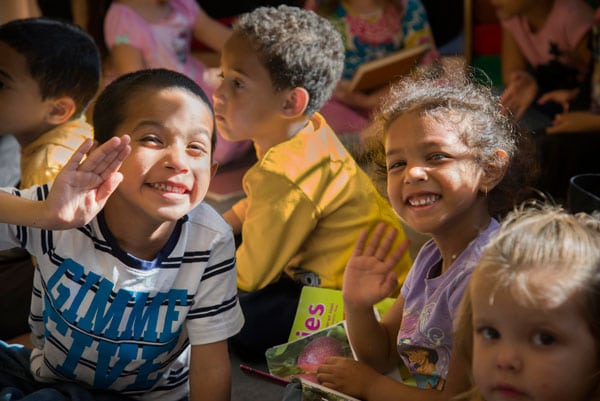
Although they are America’s original inhabitants, when it comes to US policy, American Indians often suffer from invisibility. According to the 2010 US Census, American Indians number 5.2 million, 71 percent of whom live in urban areas. Another 22 percent live on tribal lands. A more recent 2016 Census estimate suggests that the 2010 numbers are understated and that American Indians and Alaska Natives number 6.7 million—more than two percent of the US population.
One of many signs of this invisibility is in politics. Today, the number of American Indians in Congress is two, or less than 0.4 percent of Congress. The number of American Indian women who have served in Congress since the founding of the country is zero.
Of course, the American Indian experience is rooted in a history of genocide and colonialism. This experience, notes Indian Country Today, has now been medically shown to have been “woven into the DNA of Native Americans.” As Mary Annette Pember notes in the article, “Trauma experienced by earlier generations can influence the structure of our genes, making them more likely to ‘switch on’ negative responses to stress and trauma.”
In this context, the health disparities affecting American Indians are dispiriting but not surprising. Among the statistics, a report issued last year by the federal Centers for Disease Control and Prevention (CDC) highlights the following:
- American Indians and Alaska Natives born today have a life expectancy that is 4.4 years less than all US races (73.7 years to 78.1 years, respectively).
- American Indians and Alaska Natives have the highest prevalence of diabetes in the United States, more than twice the prevalence of diabetes among non-Hispanic whites.
- American Indians and Alaska Natives have higher infectious disease death rates than non-Hispanic whites.
- American Indian and Alaska Native adults are 50% more likely to have obesity than non-Hispanic white adults.
- The suicide rate among American Indian and Alaska Native adolescents and young adults ages 15 to 34 is 1.5 times higher than the national average for that age group.
- More than 26 percent of American Indians and Alaska Natives lived in poverty in 2015, the highest rate of any racial group. For the nation as a whole, the poverty rate was 14.7 percent.
- The American Indian and Alaska Native high school graduation rate is 67 percent, the lowest of any racial or ethnic group across all US schools.
Additionally, as NPQ has noted, the American Indian community has also suffered heavily from the opioid epidemic, with overdose levels on par with whites and far higher than the rates affecting Blacks, Latinxs, and Asian Americans. This past January, three Dakota-based American Indian nations—the Rosebud Sioux, Flandreau Santee Sioux, and the Sisseton Wahpeton Oyate—joined a slew of states, local governments, and other American Indian nations in suing opioid manufacturers and distributors for damages. To date, over 20 American Indian nations have filed similar suits.
Yet while the health disparities are certainly real, there have been many gains as well. For instance, the American Indians Religious Freedom Act, which only passed in 1978, required federal agencies to “eliminate interference with the free exercise of Native religion,” helping fuel a revival of American Indian spiritual traditions that improve community resiliency.
It was only in 1994 when the Equity in Educational Land-grant Status Act of 1994 “conferred land grant status on Native American colleges and created an endowment to support these institutions tribal colleges became federally recognized and were added into the land grant college system.” It was also only in that year when the Indian Health Service first had a director, Michael H. Trujillo, who hailed from an American Indian nation. One of Trujillo’s early acts as director was to formally request that all regional Indian Health Service facilities find ways to work more closely with American Indian practitioners.
The idea that it is important for healthcare providers to address social determinants of health—that is, a recognition that creating health requires making the community healthier, not just one individual at a time—has become a central focus of US healthcare in the last few years. But the American Indian notion of health required a community-based approach came long before the term “social determinants” had been invented.
A paper written by Rachelle Barraza, Jami Bartgis, PhD, and the Fresno Native Youth Council in a special 2016 issue on “Strength-based Approaches to Wellness in Indian Country,” published in the Journal of American Indian and Alaska Native Mental Health Research, reports on the work of the Fresno American Indian Health Project to develop and pilot “a strength-based, holistic, and youth-friendly self-assessment tool grounded in the Medicine Wheel.” In the tool, as developed by the group, “the four directions—east, south, west, north—represent the lifespan (i.e., infancy, childhood, adulthood, elderhood); the area of health (i.e., mental, physical, emotional, spiritual); and the GONA [Gathering of Native Americans] themes (i.e., belonging, mastery, interdependence, generosity).”
As the authors explain,
While tribal stories related to the concept of a Medicine Wheel vary greatly, the four directions support individuals, families, and the broader community to maintain health and balance. An individual is born to the east and is closely connected to the spiritual while learning how he/she belongs in the world. The south represents the child that is closely connected to the emotional where he/she learns how to master the environment. The west represents adulthood and the increased responsibilities of supporting both youth and elder parents. This is the time when an individual is closely connected to the physical and is learning how to live in interdependence with others. Finally, to the north is elderhood, closely connected to the mental and a time when the individual is very generous, giving back wisdom to the community.
The young people participating in the program in Fresno responded well to this culturally grounded approach. “It gave them a better idea about health in all areas (i.e., mental, physical, emotional, spiritual), and…supported them in considering where they wanted to grow and improve their own “whole” balance.…Youth also discussed how different this tool was from what they normally experienced in health and prevention programs.”
Sign up for our free newsletters
Subscribe to NPQ's newsletters to have our top stories delivered directly to your inbox.
By signing up, you agree to our privacy policy and terms of use, and to receive messages from NPQ and our partners.
Some efforts being developed don’t address health as it is traditionally conceived at all, but instead tackle social determinants such as poverty and unemployment directly. Lauren Tingey, Ph.D., and her colleagues, writing in the same journal issue on “strength-based approaches,” highlight one example of this, looking at the work of the Apache, who have developed a program for entrepreneurship training among youth. The idea is to “make an explicit commitment to local capacity building and community health, with an overarching emphasis on resilience.”
As Tingey and her colleagues write, “Working from a positive youth development framework, the community advisory board and research partners established some key goals: 1) to teach entrepreneurship education blended with life skills, 2) to promote school connectedness (e.g., a commitment to school, attachment to prosocial peers, belief in schools’ norms about positive behavior), and 3) to foster supportive relationships between youth, positive peers, and caring adults.”
Tingey and her colleagues note that the program that the Apache developed employed existing best practices from both Native and non-Native youth entrepreneurship education. One tool from the American Indian community was the Making Waves curriculum, developed for high school students by the Four Bands Community Fund, a nonprofit based at the Cheyenne River Sioux Reservation. The Apache curriculum also drew on materials developed by the Network for Teaching Entrepreneurship.
“Life skills content,” Tingey and colleagues add, “was drawn from previous curriculum materials and activities developed by tribal-academic partners targeting communication, social problem solving, and cognitive restructuring.”
Feather Sprengeler, who was one of the eight authors of that article, works with the White Mountain Apache Tribe on this initiative. The White Mountain Apache nation has 1.6 million acres of land and is home to about 15,500 people. Sprengeler earned her master’s in public health from Johns Hopkins University, home to the Center for American Indian Health, and she works for the Apache Youth Entrepreneurship Program. Sprengeler teaches a business curriculum to high school students and adult community members. In addition, she also assists with the research that assesses the efficiency and success of the program to make sure they meet the program goals.
The Arrowhead Business Group, with which Sprengeler works, is a multi-session youth entrepreneurship education program offering hands-on skills training for adolescents. The 16-lesson curriculum uses discussion, games, hands-on learning, and multimedia methods. Over an eight-month period, youth entrepreneurs receive 60 hours of training in eight months that focus on entrepreneurship and business development, life skills, self-efficacy, and finance.
Key tenets of the programs are that it:
- Is strengths-based
- Is rooted in a positive youth development framework
- Teaches basic business development knowledge and skills
- Promotes life skills, resilience and youth self-efficacy
- Offers support and mentorship to launch youth business
- Develops local economic and entrepreneurial capacity
Sprengeler outlines the roots of the connection between business and health. “Entrepreneurship education is a new approach to promote adolescent mental health and well-being,” Sprengeler remarks. “Entrepreneurship education fosters adolescent connectedness to caring adults, healthy peers and school. Youth receiving entrepreneurship education are more likely to have better grades, complete college and have greater career aspirations. They are also less likely to use drugs and alcohol and engage in risky behavior.”
“The first 10 lessons are taught during a five-day residential summer camp,” Sprengeler adds. “The last six lessons are taught through workshops during the academic year. The curriculum is highly participatory and skills-based. Youth practice public presentations and social networking skills. They map community assets with a focus on gaps in the local economy and identify opportunities for new businesses. Youth conduct market research and learn branding, marketing, and basic accounting concepts, which are then applied to a hands-on community-based selling event.”
The Apache provide one example of a strength-based approach being used effectively in Indian Country, but they are not the only ones. For example, on Lakota land in Pine Ridge, South Dakota, the nonprofit Thunder Valley Community Development Corporation has supported the launch of a women’s quilting worker cooperative that “aims to build community wealth through the development of new enterprises owned and run by local people.” This is part of a broader set of initiatives “centered on strengthening, healing, and building community.”
In their article, Tingey and her colleagues note that many in American Indian communities “are dismayed by research that emphasizes negativity and problems, and evaluation of positive youth development interventions for impacts on substance use and suicide is rare. Recognizing that connectedness is a fundamental focal point of Indigenous cultures and value systems…investment in a groundbreaking approach such as entrepreneurship education for substance use and suicide prevention is justified,” they conclude.











